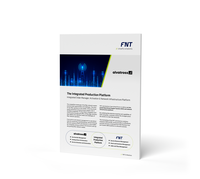What is fiber network management?
Fiber network management refers to the processes, tools, and strategies used to deploy, monitor, maintain, and optimize fiber optic networks. It manages physical and logical network components such as fiber cables, optical switches, and transmission equipment. Effective fiber network management ensures seamless data transmission, minimal downtime, improved service quality, and cost-effective network operations for service providers and businesses.
Main Components of Fiber Network Management
What are the benefits of fiber network management?
Plan infrastructure and perform tasks properly from the beginning to eliminate the risk of unnecessary equipment purchases and time-consuming troubleshooting, repairs and rework of improperly installed infrastructure.
Accurate data about the current state of the network is always available for planning further network rollouts. Data stays synchronized with automatic updates to the documentation when any changes to any part of the network are executed, so correct data about the current state of the network is available to all processes that need it. Up to date network data ensures sufficient network capacity for the expanded network and proper allocation of resources.
Reduce service disruptions, slow speeds and other performance issues with a well-planned and managed fiber network. Operate a more resilient network with back-up options and fast incident handling procedures defined and implemented.
Optimizing the network infrastructure during the planning process eliminates waste from the get-go. Accurate capacity needs and overview of network components limits resource usage to what’s really necessary. Capturing and reporting on CO2 and other eco factors gives real data about your carbon footprint so you can adjust as needed.
Highlights of FNT’s Fiber Network Management Software
FNT’s solution for fiber network management accelerates and facilitates the FTTx rollout process from beginning to end and simplifies ongoing operation and service assurance. At the heart of the software is a network digital twin, or virtual representation of the network infrastructure. It presents an accurate replica of all physical, logical and virtual assets, topologies, and relationships in a centralized repository. This provides a reliable basis for planning and making decisions at every stage of the fiber rollout - from initial analysis of the target area to ongoing operation of the new fiber network.
The solution incorporates real-world data such as geodata, which is crucial for planning efficient and cost-effective routes that consider terrain and other environmental factors. Once optimal routes are identified it helps ensure network resources are used most efficiently. Integrated work order management and mobile access to network inventory data ensure the plans handed over for construction are executed properly and that any changes are promptly documented in the network digital twin. This guarantees the as-is state of the network is always accurate for ongoing operation, incident resolution and further expansion.
Would you like to experience the FNT solution for Fiber Network Management live?
FAQ: Fiber Network Management
Fiber network management is a subset of network management. Both focus on monitoring, maintaining, and optimizing network performance, but fiber network management is a specialized branch within network management that deals exclusively with fiber optic infrastructure. Network management has a broader, multi-technology approach.
Some of the key differences:
- Scope. Fiber network management focuses on fiber optic infrastructure (cables, optical switches, passive & active optical components), while network management handles all types of networks, including fiber, copper, wireless, and cloud-based infrastructure.
- Transmission Medium. Fiber network management deals with light-based transmission in fiber optics, while network management covers electrical (copper), radio waves (Wi-Fi, cellular), and optical transmission.
- Key Components. Fiber network management deals with optical fibers, fiber splicing, OTDR (Optical Time-Domain Reflectometer), and DWDM (Dense Wavelength Division Multiplexing), while network management deals with routers, switches, firewalls, servers, Wi-Fi access points, and Ethernet cables.
- Higher bandwidth and faster speeds. This is important for uninterrupted streaming, fast downloads, and reduced latency.
- Better reliability. Fiber optic cables are less prone to breakage, corrosion, and environmental factors.
- More cost-effective. Initial installation cost of fiber optic infrastructure is higher, but long-term benefits make it the more economical investment. Once installed there will be reduced maintenance expenses, minimal signal loss, and it has a longer lifespan.
- Eco-friendly. It promotes environmental sustainability by consuming dramatically less energy than the alternatives.
- Future-proof. In the data-driven world, fiber optics provide the necessary infrastructure to support future technological advancements because it can handle increasing data transmission demands.
Fiber rollout projects are often undertaken by telecommunications companies, internet service providers (ISPs), or government agencies to improve broadband infrastructure, enhance internet connectivity, and meet growing demand for high-speed internet services.
Other industries where large amounts of data need to be transmitted simultaneously are also switching to fiber, since fiber offers significantly higher bandwidth capacities. Examples are those that rely heavily on video conferencing, cloud computing, and data centers.
Would you like to know more about Fiber Network Management? Then you might be interested in the following:









